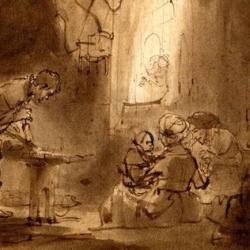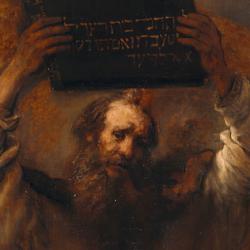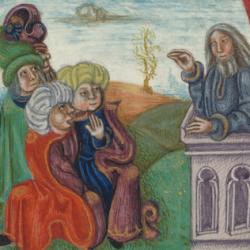Exodus 10 contains the first biblical references to locusts, and in that chapter the word is used 7 times. It’s enough to make one suspicious – suspicious that there’s a creation motif here, suspicious that the seven references might obliquely hint at the days of creation. Let’s follow that suspicion:
1. Yahweh threatens to bring locusts to cover the land, vv 4-5; Day 1: Waters cover the earth – the verb “cover” is first used of the flood waters that turn the earth back to Genesis 1:2
2. Yahweh tells Moses to stretch his hand to bring locusts, v 12; Day 2: Moses as “firmament” mediator, and locusts come to cover the earth, like a firmament
3. East wind brings locusts, v 13; Day 3: Wind pushes back waters so dry land appears
4. Locusts go up over land (verb is ‘alah, “ascend”), v. 14; Day 4: heavenly rulers
5. Locusts are unprecedented, v 14; Day 5: swarming things
6. West wind blows locusts into Red Sea, v 19; Day 6: see below
7. No more locusts, v 19; Day 7: Sabbath reprieve
The sevenfold reference to an agent of destruction is, like many of the heptamerous lists and patterns of Scripture (cf. Revelation), shows that the locusts are agents of decreation.
Numbers 3 and 6 here clearly foreshadow what is going to happen to Pharaoh and his armies. In Exodus 14:21, an east wind blows all night and opens up a path for Israel to cross the Red Sea, a “Day 3” image. Verse 19 foreshadows the drowning of Pharaoh and his hosts in the Red Sea. If we can overlay the creation story here, then Pharaoh appears to be an “Adam” figure who exalts himself against God and is cast down. In any case, Pharaoh and Egypt are devouring locusts, but the wind of Yahweh blows them all away.










